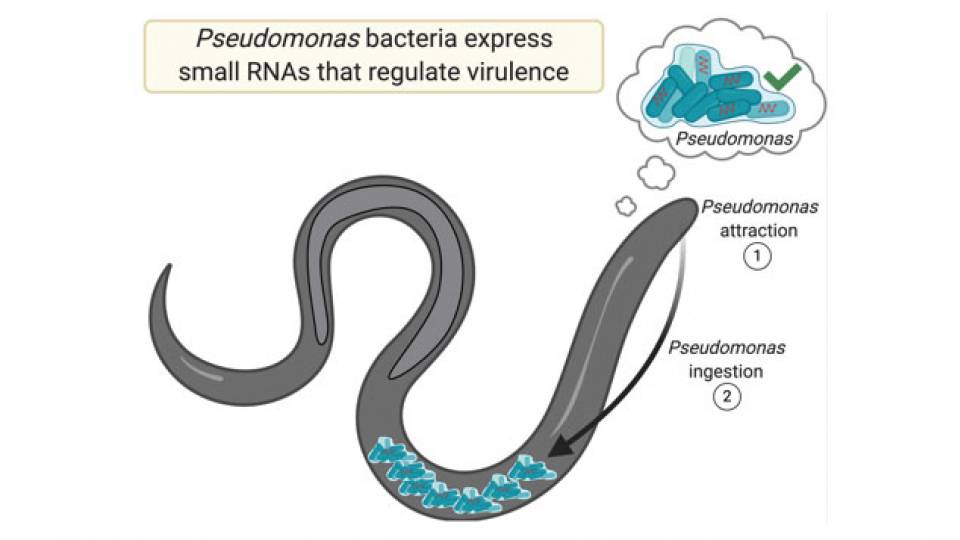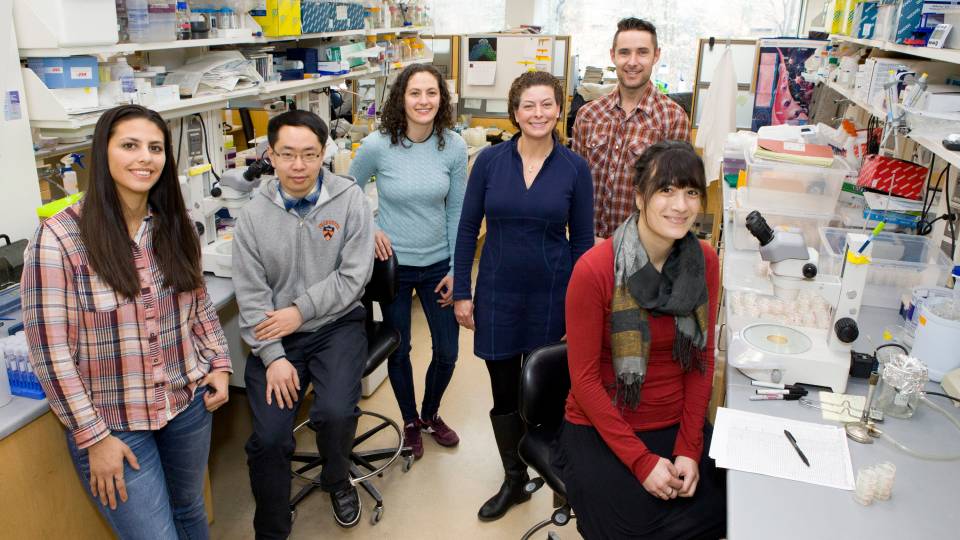In many species, mating comes at the steep price of an organism's life, an evolutionary process intended to regulate reproductive competition. But males of certain roundworm species have doubled down with two methods of checking out after mating, including one in which the males poison each other, according to new research.
Princeton University researchers report in the journal eLife two separate causes of early death in males of the roundworm species Caenorhabditis elegans — mating and pheromones released by other males. The findings provide insight into how aging, longevity and population are naturally regulated for different species and sexes.
"Differences in longevity between the sexes is a common yet mysterious phenomenon," said senior author Coleen Murphy, a Princeton University professor of molecular biology and the Lewis-Sigler Institute for Integrative Genomics. "C. elegans has been an excellent model organism to probe the underlying mechanisms of aging and longevity regulation, and sex-specific longevity patterns also exist in C. elegans."

Princeton University researchers report that males of the roundworm species Caenorhabditis elegans have doubled down with two methods of checking out after reproducing — a lethal gene activated after mating, and pheromones released by other males. Both mechanisms limit competition and genetic excess, but act through separate pathways. Pheromones are used by hermaphroditic roundworm species to cull explosions in male populations. Mating-induced death results from the activation of genes the males normally never use that ultimately kill them. The images above show that male roundworms that mated (bottom row) shrank in size 7 days after reproducing and their lifespan decreased by around 35 percent compared with unmated solitary males (top row). Hermaphrodites experienced a similar drop in lifespan. (Photo courtesy of Coleen Murphy, Department of Molecular Biology)
C. elegans consists of males and hermaphrodites, with hermaphrodites normally dominating the population, Murphy said. Previous studies of C. elegans longevity have mostly been performed using hermaphrodites, meaning very little is known about how the male lifespan is controlled.
Mating-induced death, which affects both sexes and many other Caenorhabditis species, may be an unavoidable consequence of reproduction, the researchers reported. Murphy and first author Cheng Shi, a Princeton postdoctoral research associate, reported in the journal Science in 2014 that female C. elegans perish after mating, a form of competition between males.
Male pheromone-dependent killing, however, is specific to males of hermaphroditic Caenorhabditis species. "We think it's a mechanism to get rid of males after they've been useful," Murphy said. The hermaphrodites have basically figured out a way to produce males when they need them for genetic diversity, and get rid of them again by making the males poison themselves."
The researchers set out to unravel the mystery of why male C. elegans living in groups have shorter lives than solitary males, with the death rate increasing with the number of males present. To first see if pheromones play a role in this phenomenon, the researchers looked at the survival rate of grouped male roundworms with a pheromone deficiency. Eight of these males lived almost as long as solitary normal males, suggesting that the male pheromone is indeed a major killer of grouped normal males.
Male roundworms that mated shrank in size after reproducing and their lifespan decreased by around 35 percent compared with unmated solitary males. Hermaphrodites experienced a similar drop in lifespan. When treated with male pheromone, however, the males showed no signs of shrinking, which suggests that mating and male pheromones act through different pathways. The researchers found that normal males paired with a pheromone-deficient hermaphrodite died earlier — and that pheromone-deficient males mating with normal hermaphrodites also swiftly succumbed — which indicated that death after reproduction is due to mating itself rather than the release of pheromones.
Mating-induced death results from the activation of genes — known as germline upregulation — the males normally never use that ultimately kill them, Murphy said. At the same time, germline upregulation and neurons seem to influence the production and reception of the male's deadly pheromone.
The researchers report that their roundworm results for mating-induced death parallel studies showing that Korean eunuchs — castrated men — enjoyed long lives while Chinese emperors known to be especially promiscuous experienced lifespans cut short by about 35 percent. This suggests that life may have bestowed in many organisms an internal regulator that rewards low reproduction with long life and cuts short those whose genes might become too prevalent.
"Death seems like an unavoidable consequence of reproduction, and mating-induced death relies upon many longevity mechanisms but in reverse," Murphy said. "In C. elegans, it is really important to kill males when they don't want them around anymore."
The paper, "Mating and male pheromone kill Caenorhabditis males through distinct mechanisms," was reported March 14 in eLife. The work was supported by March of Dimes, the National Institutes of Health (grant nos. 5T32GM007388-39 and DP1 GM119167-02), and a Howard Hughes Medical Institute Faculty Scholars Award.
Morgan Kelly, Princeton University, and eLife contributed to this story.



